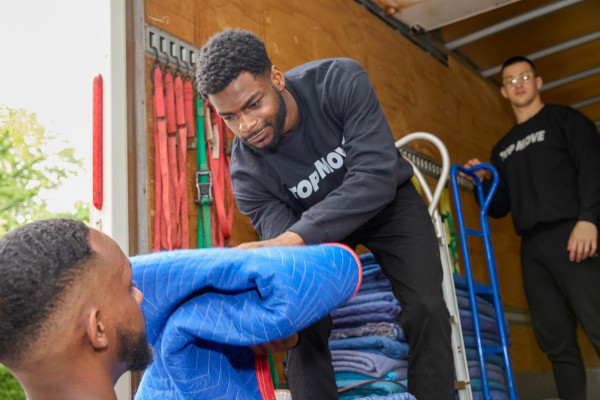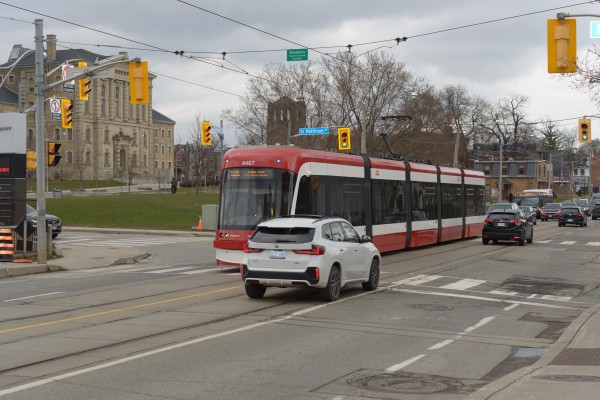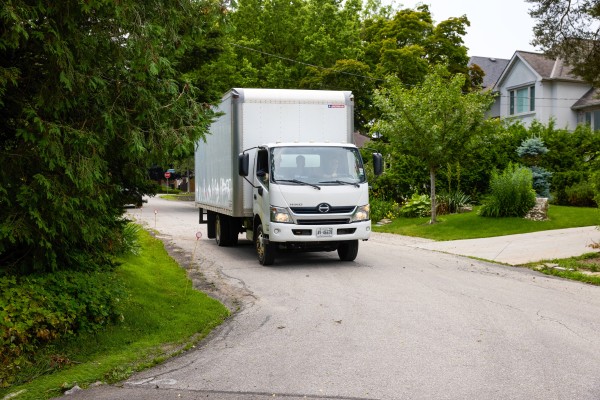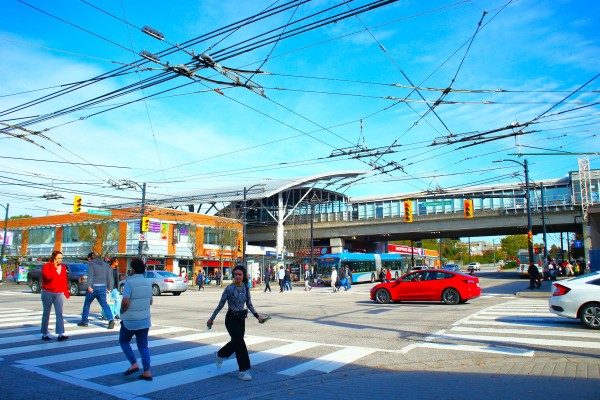A complete guide to moving sustainably in Canada


Millions of people relocate every year, and these moves can generate significant waste and emissions. Specifically in Canada, due to its sheer size, moving day often involves travelling thousands of kilometres, so emissions (and costs) can add up.
Whether you are moving within your city, relocating to a different city, town or province, or immigrating to Canada, there are ways to minimize your impact on the planet. This guide provides you with tips and practical steps to reduce your environmental impact while saving money at the same time.
Responsible downsizing and decluttering before you move
 North Americans, in particular, like to accumulate a lot of stuff. There are entire industries based around either disposing of, re-selling or repurposing discarded items. If you want to downsize your possessions to make your move a lot faster, cheaper and more sustainable, here are some tips to consider.
North Americans, in particular, like to accumulate a lot of stuff. There are entire industries based around either disposing of, re-selling or repurposing discarded items. If you want to downsize your possessions to make your move a lot faster, cheaper and more sustainable, here are some tips to consider.
Donate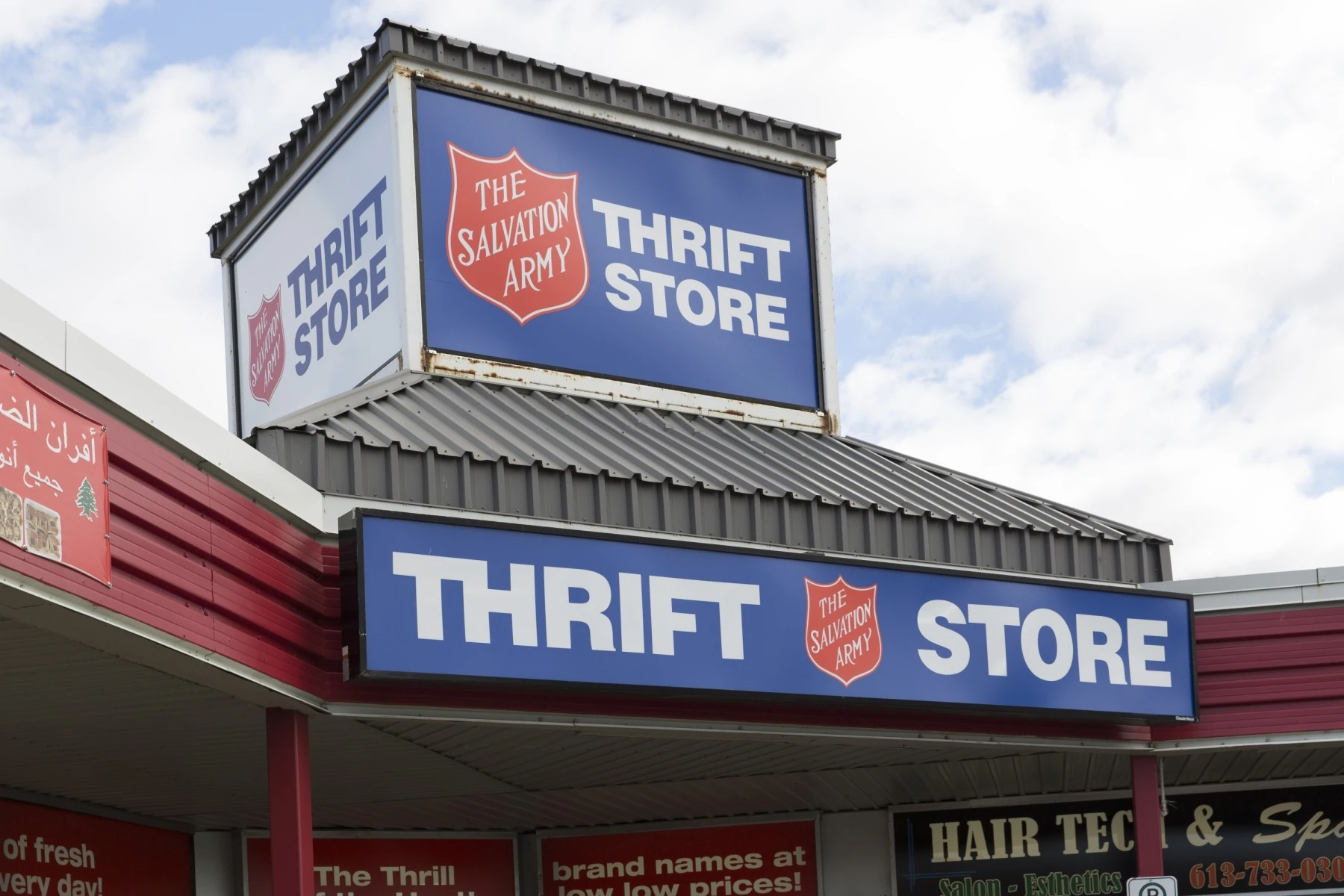
Organisations such as the Salvation Army and Habitat for Humanity ReStores have thrift stores in almost every town and city. Diabetes Canada organizes clothing drives where they will come to your house and pick up your donations. Check for women’s organisations, they often have wonderfully curated thrift stores.
Sell or give away items
You can use online platforms and marketplaces specific to your town or city to do so, such as:
-
Facebook Marketplace
-
Kijiji
-
Poshmark
-
Ebay
-
Local online community groups
Recycle e-waste
Electronic waste (e-waste) is collected and managed by local governments or municipalities, often through designated drop-off locations or collection events. You can recycle old computers, cell phones, and appliances and prevent them from ending up in landfills.
Choose repurposed, reusable or recyclable packing materials (in that order!)
-
Get creative with your packing approach by using what you may already have around. Duffle bags, coolers, reusable totes and pillowcases can all be stuffed full of belongings.
-
Most cities have services where you can rent reusable plastic bins, such as Frogbox or Green Box Rental.
View this post on Instagram
-
For padding fragile items, use recyclable or compostable materials, such as old newspapers, used bubble wrap, old clothing and blankets.
-
Use biodegradable tape and paper-based alternatives.
Whatever you choose, try to avoid Styrofoam and single-use plastics.
Hire an eco-friendly moving company
Wise Move Canada is a platform that helps you book trusted and vetted local moving companies. Simply post your move details once, get multiple quotes all in one place, compare prices and reviews, and then book your preferred mover. It’s free to use, and you pay the mover directly after the job is done.
When you are filling out the request form, specify that you are looking for a moving company with eco-friendly practices. Green movers will drive with fuel-efficient trucks, optimize their route and use reusable equipment.
Questions to ask movers
-
Do you offset emissions?
-
What kind of materials do you use?
-
Do you recycle packing materials?
Rural vs. urban moves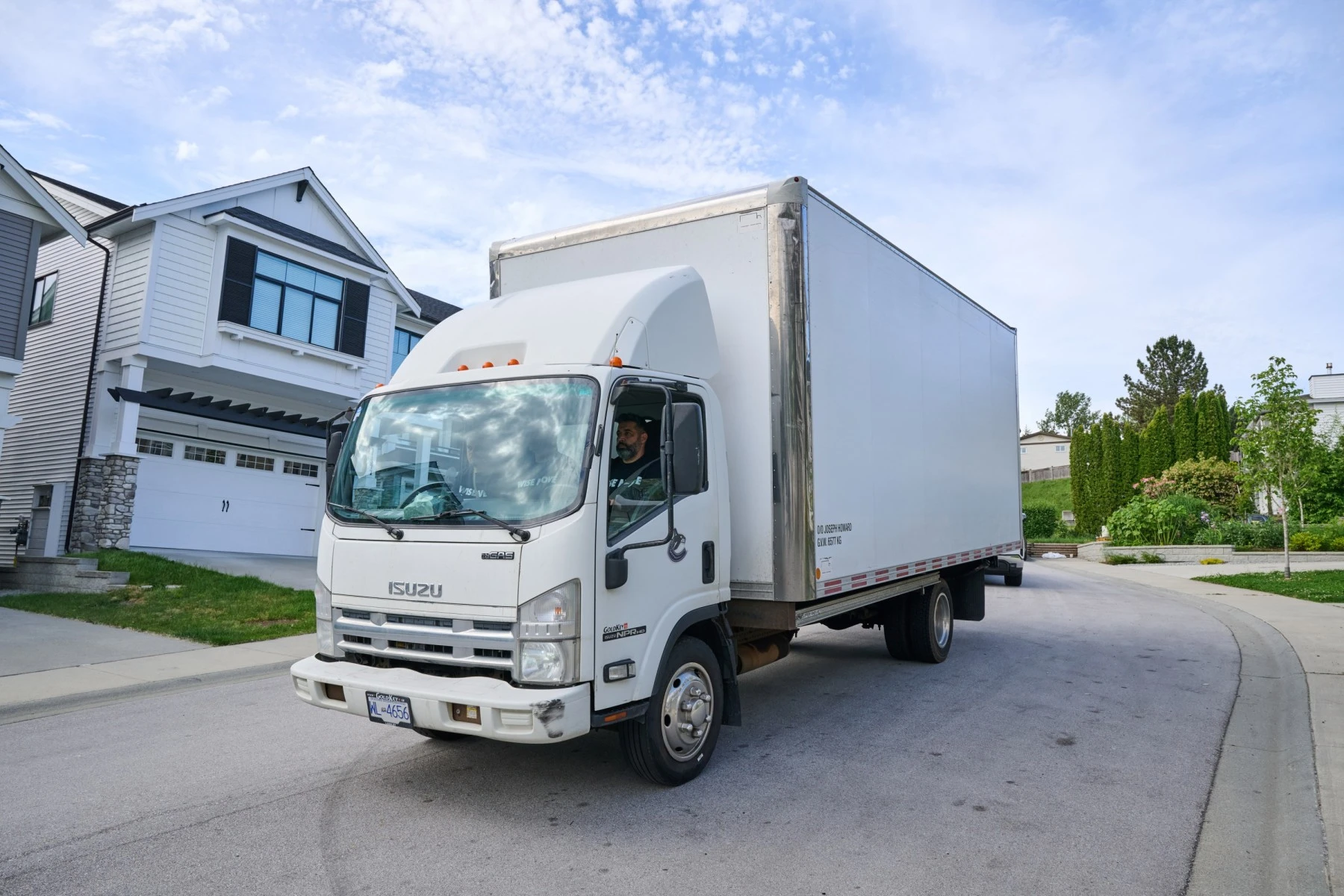
In urban areas, it’s typically easier to plan a low-waste move. You’ll find more green moving companies, a wider range of transport options (from bike couriers for small loads to electric vans), greater flexibility with scheduling, and convenient access to reusable packing rentals, donation centres, and recycling facilities. There are also more local platforms for rehoming unwanted items or sourcing second-hand supplies—all of which help reduce waste and your overall footprint.
Rural moves often require more self-reliance:
-
You may need to travel further to donate or recycle items.
-
Carpool and consolidate trips with neighbours and friends, and post on local online community groups for shared moving help.
-
Reuse local materials or borrow before shopping for new materials.
In rural areas, your options for moving companies may be limited. Consider alternative solutions such as borrowing a truck or trailer, hosting a moving party and providing pizza and drinks for your helpers. Using Wise Move’s platform, you can also tap into a network of movers already operating in your region, which can help you share the load on existing routes to save costs and reduce emissions.
Reduce transport emissions
There are a few simple ways to lighten your transportation footprint when moving:
Combine errands
If you’re taking a DIY approach to your move, combine the trips to take items to your new home with everyday errands like going to the bank, grocery store and hardware store.
Opt for the smallest vehicle available
Many moving companies offer a selection of vehicle sizes, depending on your needs. Once you have shared details with your movers, they will be able to assess what size vehicle you will need.
Go hybrid or electric
If it’s within your budget, consider renting a hybrid or electric moving truck. This option is becoming increasingly common in major cities like Toronto and Vancouver.
Utilise regional rideshare platforms
Community-driven (no pun intended) rideshare platforms are sites where people can either post or inquire about rides from point A to point B. Sometimes the rides will be just for cargo instead of passengers. This is a great way to get stuff to another location, while keeping money in the community and utilising a vehicle that is already making the trip. Cargo rideshares help the planet and fuel a circular economy.
Research transportation alternatives for longer distances
For moving across provinces, look for consolidated shipping options or rail transport.
Offset emissions
Purchase and retire offsets that match your emissions, through companies such as Carbonzero and Bullfrog Power.
Final tips for a sustainable move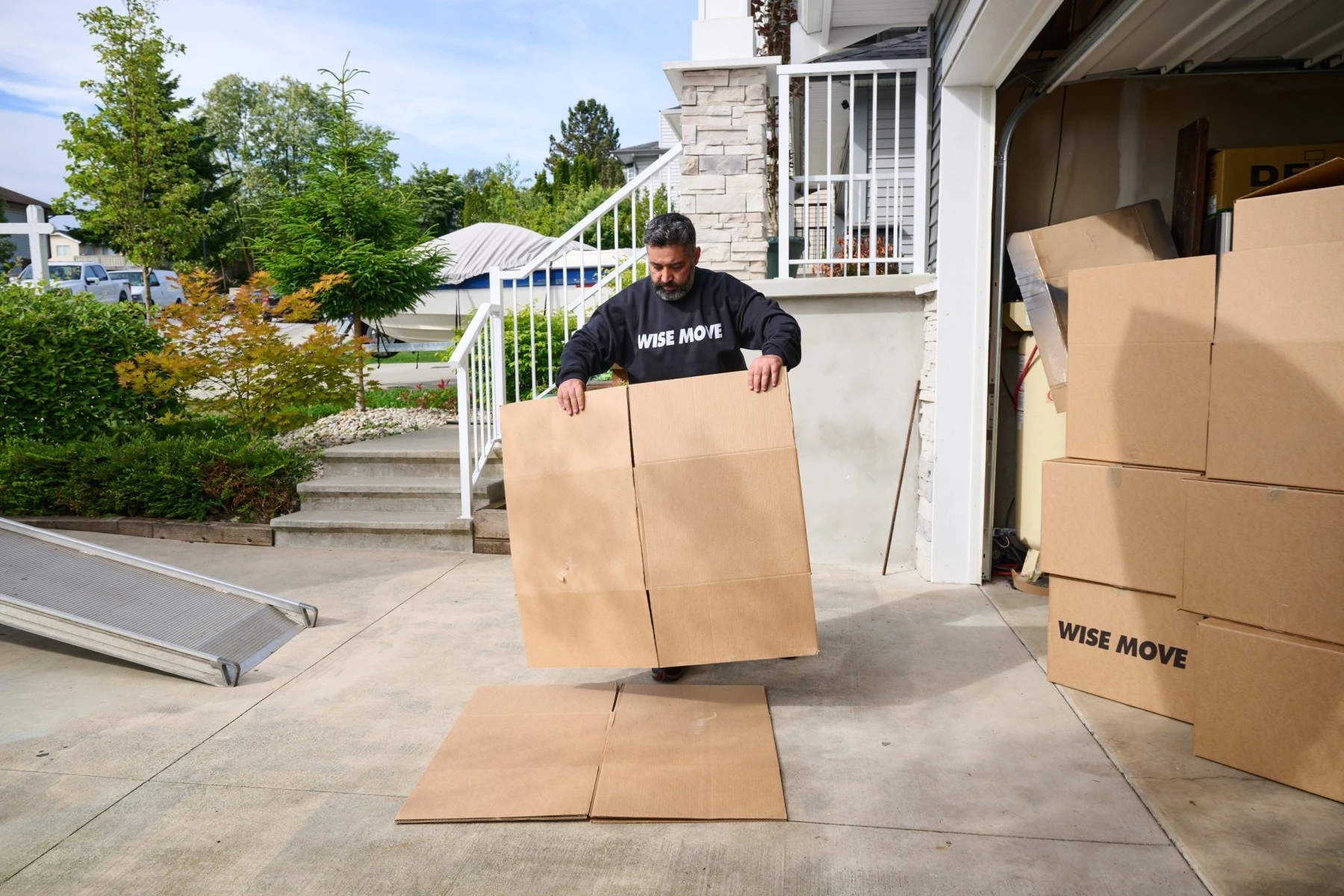
Meal prep for moving day
Prepare a week’s worth of meals in advance and freeze them for moving week. This way, you will be less tempted to buy quick, packaged meals during your busiest week. You’ll also be eating healthier. Moving is a huge physical output–you will need all the nutrients you can get!
Pack a “zero-waste moving kit”
-
Healthy snacks
-
Reusable dishes and to-go mugs
-
Water bottles
-
Cleaning cloths
-
Eco-friendly cleaning supplies
-
Change of clothes, moving day gets sweaty and dusty.
Share your leftover moving supplies through community groups
After your move, you’ll likely have leftover boxes, bubble wrap, or packing paper that’s still in good condition. Instead of tossing them, offer them up on local community platforms, such as Facebook Marketplace, Buy Nothing groups, Nextdoor, or local zero-waste forums. Not only does this keep materials in use and out of landfills, but it also helps others in your community reduce costs and waste during their own moves. Some areas even have dedicated “moving boxes exchange” groups where people post what they’re giving away or looking for. It’s an easy, feel-good way to pass it forward.
Useful Canadian resources
- E-Waste (by province): Recycle My Electronics
- Waste Guide: Earth 911
-
Circular economy platforms:
- Municipal guides:
FAQs about sustainable moving in Canada
1. How can I pack sustainably using items I already have?
Use items you already own like sweaters, socks, towels, pillowcases, and reusable totes to wrap and cushion fragile items. It’s a great way to avoid single-use plastics and reduce your moving footprint without spending extra on supplies.
2. Are reusable moving bins worth it?
Yes, reusable plastic bins can make packing easier and reduce cardboard waste. Companies like Frogbox and U-Haul offer bin rentals in many Canadian cities. They’re stackable, sturdy, and often come delivered to your door.
3. Where can I get free or recycled moving supplies in urban areas?
Check local Facebook Marketplace listings, Buy Nothing groups, Nextdoor, and zero-waste forums in your area. Many people give away boxes and packing supplies after their move. It's a win-win for you and the planet.
4. What’s a smart tip for organizing essentials on moving day?
Pack an “open first” box or bag with your daily essentials (think toothbrush, deodorant, phone charger, snacks, water bottle, sheets, and a change of clothes.) This will help you settle in quickly without scrambling for basics.
5. Can I share or donate leftover moving supplies?
Absolutely. Once your move is done, list any leftover boxes, bubble wrap, or bins on community groups or reuse forums. Many local platforms have active members looking for moving supplies, and this helps keep materials in circulation.
6. How eco-friendly is moving in rural Canada vs the city?
Urban moves tend to offer more sustainable options, like access to green movers, electric vehicles, and donation centres. In rural areas, it may take more planning, but you can still reduce your footprint by reusing materials, coordinating shared trips, and using Wise Move to find and book movers already passing through your region.
7. Do Canadian moving companies offer carbon offsets or green packaging?
Some do, especially in larger cities. Look for companies that offer fuel-efficient vehicles, reusable equipment, or offset emissions. Through Wise Move, you can request movers that prioritise eco-friendly practices during the booking process.
What do our customers say?















